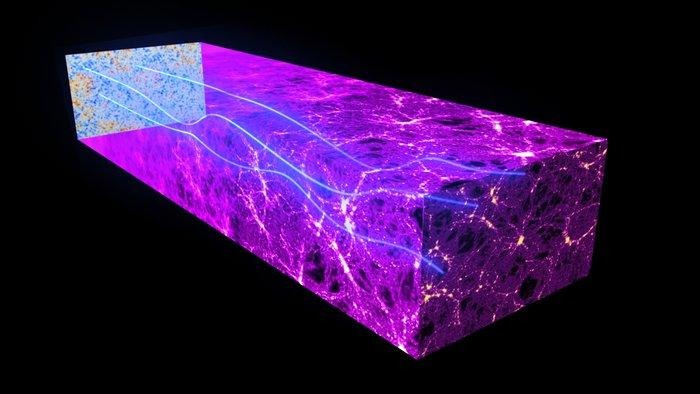Big Bang evidence evaporates
The Big Bang theory has not been disproven. Get that idea out of your mind as fast as possible. Instead, a team of scientists have, this week, produced a paper which disproves their previous findings that suggest they'd found the first "direct evidence" that the Big Bang had happened in the way it's widely accepted to have happened. Instead of knowing when – 10 or so seconds after the Big Bang happened – the universe ballooned and expanded at a super-fast rate, we're back to where we were before the BICEP2 team announced their findings this past March. That's all.
The BICEP2 team saw B-modes – or thought they saw B-modes. These "B-modes" were what was needed to show the spreading out of the universe – inflation marks left in the light left over from the Big Bang. Cosmic Microwave Background (CMB) was meant to have shown "B-mode polarization", or a pattern that essentially proved the expansion speed and made solid sense of the Big Bang theory.
Above you'll see "The magnetic field along the Galactic plane" as captured by ESA/Planck Collaboration. Acknowledgment: M.-A. Miville-Deschênes, CNRS – Institut d'Astrophysique Spatiale, Université Paris-XI, Orsay, France. This image was first released on the 15th of December, 2014.
"We have validated the main likelihood analysis on simulations of a dust-only model and performed a simple subtraction of scaled spectra, which approximates a mapbased dust cleaning (obtaining an r constraint curve that peaks somewhat lower).
Finally we investigated the possibility of astrophysical or instrumental decorrelation of the sky patterns between experiments or frequencies and find no evidence for relevant bias." – A Joint Analysis of BICEP2/Keck Array and Planck Data (DRAFT)
Unfortunately, once the team removed "cosmic dust" contamination of their results from their results, their results were no longer robust enough to confirm cosmic inflation.

Primordial cosmic waves remain elusive.
"This joint work has shown that the detection of primordial B-modes is no longer robust once the emission from Galactic dust is removed," said principal investigator of the HFI instrument on Planck at the Institut d'Astrophysique Spatiale in Orsay, France, Mr Jean-Loup Puget. "unfortunately, we have not been able to confirm that the signal is an imprint of cosmic inflation."
The joint work he spoke of goes by the name "A Joint Analysis of BICEP2/Keck Array and Planck Data", a paper that's been submitted to Physical Review Letters that will be published immediately if not soon.
More information can be found in our original report on the matter. You can also see the original announcement, including the DRAFT of the paper submitted to Physical Review Letters at the ESA.
